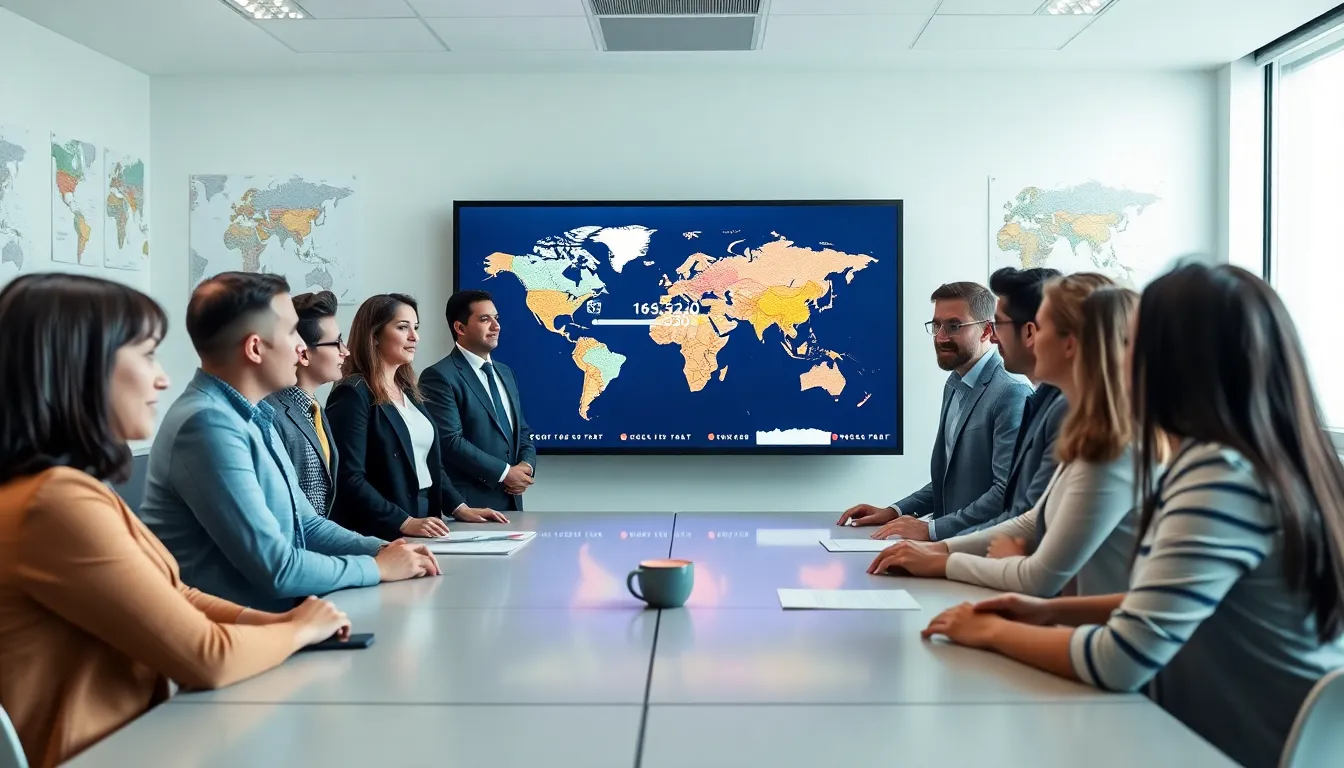When it comes to finding specific locations on our vast planet, latitude and longitude are the unsung heroes that guide us from point A to B. Picture this: you’re lost in a forest, your phone’s out of battery, and the only clue you have is a mysterious number combination, 185.632L53.200. Sounds like a puzzle, doesn’t it? Fear not. In this text, we’ll not only crack the code but also jump into why these numbers matter. Grab your imaginary compass, and let’s embark on this geographical adventure.
Understanding Geographic Coordinates

What Are Latitude and Longitude?
Latitude and longitude are the dynamic duo of geographic coordinates, essential in pinpointing exact locations on Earth. Latitude lines run horizontally, measuring how far north or south something is from the equator, which sits at 0 degrees. Imagine it wrapping around the globe like a cozy scarf. On the flip side, longitude lines stretch vertically, determining how far east or west you are from the Prime Meridian, which is at 0 degrees. Together, they create a grid allowing us to navigate with precision.
The Significance of Each Coordinate
Each coordinate tells a story. Latitude indicates climate and daylight variation. For instance, cities closer to the equator bask in warmer weather year-round, whereas locations at higher latitudes experience chilling winters. Longitude, meanwhile, introduces the concept of time zones. Think about it: while it’s sunny in New York, it could be the crack of dawn in Los Angeles. Understanding these coordinates not only helps in navigation but also adds context to the geographical phenomena influencing a location.
How to Interpret 185.632L53.200
Breaking Down the Coordinates
Let’s break down our mystery combination, 185.632L53.200. At a glance, it appears to be a hybrid of longitude and latitude. Ignoring the ‘L’ for a moment, 185.632 would represent a longitude. But wait. Longitude only ranges from -180 to 180 degrees. This makes our first number suspicious.
Now, examining 53.200: that fits well into the latitude range (from -90 to 90 degrees), likely pinpointing a specific location north or south of the equator. Realistically, it suggests we’re working with a decimal format, where these numbers must be evaluated properly in context.
Potential Locations for 185.632 and 53.200
Using the correct interpretation, let’s attempt to identify where these coordinates could lead. The closest valid longitude, derived from 185.632, could be adjusted to within the proper range. Alternatively, assuming a format error or a scale where local mappings apply could direct us to various locations around the world. In fact, 53.200 latitude across the globe covers parts of Canada, Europe, andAsia, revealing possibilities that extend from bustling urban areas to serene natural landscapes.
Applications of Coordinate Systems
Navigation and Mapping
In present-day life, coordinate systems underpin navigation. They empower everything from traditional maps to cutting-edge GPS technology. When people input coordinates into their devices, be it for a road trip or hiking in the wild, they rely on latitude and longitude to deliver precise directions. Without these numbers, the modern traveler would be as lost as a ship without a compass.
Scientific Research and Data Collection
Beyond travel, scientific communities use these coordinates for geographical data collection. From environmental studies measuring climate change effects in regions across specific latitudes, to research tracking animal migrations, longitude and latitude play crucial roles. They enhance our understanding of Earth’s diverse ecosystems, enabling actionable insights that can inform conservation efforts and public policy.
Future of Geographic Coordinates in Technology
Role in GPS and Navigation Systems
The evolution of GPS technology signifies a new era in coordinate application, improving user experience and accuracy. With satellites orbiting the Earth, GPS devices can now provide real-time positioning. Imagine being guided through complex urban landscapes with pinpoint accuracy, or emergency services navigating rapidly to your location during critical situations. Coordinate systems lie at the heart of such advancements, ensuring reliable connectivity between users and their destinations.
Impact on Geographic Information Systems (GIS)
Geographic Information Systems (GIS) have revolutionized how we visualize data. This technology enables professionals to layer various data types over geographical maps, facilitating complex data analysis. From urban planning to disaster management, GIS applications commonly rely on geographic coordinates for making informed decisions. As technology continues to advance, so will the importance of accurate coordinate systems.








